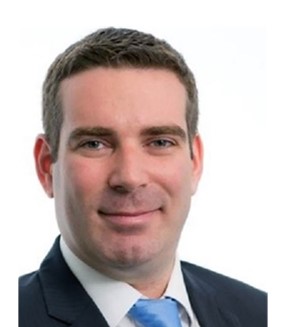In brief
- Consolidating systems and getting rid of data silos has long been thought a panacea for all operational ills. But how about leaving the trading infrastructures in place and focusing on optimizing the silos themselves?
- Operators within trading silos are unable to make optimal decisions due to a lack of access to data in adjacent silos. Liberation of that trapped data could provide a perfect opportunity for empowerment
- So, how can a consolidated set of technologies, funding mechanisms and processes improve what might already be fit-for-purpose trading entities for multiple asset-based trading desks and business units/silos? Read on
Welcome to the second article in the Enterprise Resource Management thought leadership series. In the first article co-authored with Robert McWilliam of Kynec, the case and industry evidence for cross-desk optimization of collateral, funding and liquidity management was presented. This article, co-authored with Vincent Kilcoyne from SmartStream Technologies, posits that a faster way to achieving this optimization is by liberating data from existing multi-desk trading environments within banks versus chasing the dream of what is otherwise deemed "the consolidation of data silos".
Data silos are not the problem, but possibly the foundation of the solution
In the financial services arena, the concept of consolidating systems and getting rid of data silos has long been a panacea for all manner of hopes for further optimization, synergies and efficiency. Are the associated barriers technological, operational or communicational in nature? Do we hope that by removing replication across technology, operational and back-office costs, that optimization benefits will be achieved? Or, is there a case to be made for leaving these trading infrastructures in place and focus attention on optimization across the silos themselves.
To illustrate, Formula 1 car racing is a good comparative of optimized symphony. Each component in the car is competitively manufactured and in fact regulated. Then we have the performance contributed by each of the engine, aerodynamics, braking, tyres and suspension teams, which in turn is completed by the F1 driver eking out the optimal efficiency of the vehicle on the track. Each part has been designed to be the best part it can be. It’s important to note that many of the elements are actually sourced externally, rather than manufactured by the team.
While all these components and assemblies are different, the engine management system is connected to a vast array of sensors and control systems, thereby ensuring that the operator (driver) and the support team have complete visibility of every element, to ensure optimal outcome.
In contrast, and purposely stressing the point, futuristic views of a car within a wheel, leads to an interesting level of simplicity but degrading multiple components for the purposes of a consolidated design. The analogy extends similarly to the airline industry of laptop manufacturing. Best of breed componentry, assembled in the right combination, leads to overall opportunity, competitiveness and growth.
F1 cars have around 300 sensors across multiple components — instrument sensors, monitoring sensors and control sensors — all feeding real-time data (10,000 data points per second) back to a control center where it’s stored and analyzed with information fed to the driver and used by engineers to improve the car for the next race.
In contrast, capital markets dealers have multiple back-office collateral, reconciliation, corporate actions, cash management and settlement systems (components) that need ’sensors’ so that the data can be harmonized and consolidated in a central data store with information and insight made available quickly to decision makers (i.e., Firmwide Risk Management) and calibrate for the next race (Trading, Risk and Operations).
Liberating data from existing systems is key
Why can't this view be applied across multiple asset-based trading desks or business units aka, silos? Each desk has historically been established and grown requiring specialized trading technology, market expertise, funding requirements, risk governance, settlement processes, cost controls and regulatory compliance. How could a singular consolidated set of technologies, funding mechanisms and processes improve what is likely already fit for purpose trading entities?
Perhaps the answer lies at the enterprise cross-desk level of the financial institution that manages the interconnected funding, liquidity and collateral resources that support each trading desk, but in fact is itself inefficient as to how these resources area allocated.
While not a new revelation, the CFO/CIO/COO/CDOs of financial institutions have to balance allocated capital for best returns in balance with the cost of liquidity, funding and collateral. Is it the fault of the individual trading desks that:
- Pools of collateral are inefficiently held or acquired for the exposures that could be more cheaply satisfied with other bank assets held or available in cheaper locations
- That large balances are held as floats/buffers, anticipating potential shortfalls that are not forecasted
- Staff levels remain high to perform necessary reconciliations which provide the necessary accuracy and confidence in intraday liquidity positions that should reflect what has settled and what should have settled
- That the cost of these inefficiencies, once bearable, have now expanded with increasing interest rates
- That adjustments in trading strategies across the desks may yield better overall returns, if properly orchestrated across trading desks
The need to improve and normalize connectivity to existing systems
The data to alleviate these challenges exists within each trading desk, business unit and silo; but technical connectivity and communications remain barriers to liberating the data so that this data can be used to inform the financial servicing and trading strategies across each desk.
The key is to remove imperfections in the communication, operating silos and technology connectivity. What we are in control of is the workflow, data connectivity and data within the silos. By accessing this information consistently, we can assure the quality of data between the systems. Normalized, this data can be turned into actionable and compliant intelligence that in turn can be used to improve the financial performance of each desk and business unit.
The immediate first step is to determine what systems are fit for purpose in terms of providing data for the organization as a whole, and whether those systems need replacing or can be augmented to liberate the required data. Like with XVA large pre-trade review, the bigger picture of what the bank is trying to do across all trading operations, many of the steps are currently manual, slow and inefficient in gathering and accessing the necessary information. Compared to a manufacturing process, banks are very inefficient in contrast. Flow business is razor tight in terms of margins, and financial/collateral allocation to other desk is falling under increasing pressure. Properly informed insight will lead to cross-desk strategies, principles and actions that lead to immediate collateral optimization funding, buffer optimization, capital optimization, better macro hedging and improved global geographic settlement and payments, spread and lags, all while retaining the regulatory integrity of the source silos.
Liberating data from existing systems with SmartStream
Inventory management and asset optimization are key — due to rising interest rates, demand for HQLA, pressure on HQLA, tail risk events.
These events cause issues in the market, pushing participants to obtain real-time data to ensure that assets are identified, moved and situated optimally.
Data can be locked in an organization due to a myriad of systems that do not interconnect. Fails could be reported multiple times within an organization by each system if not interconnected.
Any given fail affects multiple departments within an organization. The manual work required to identify, resolve and communicate a fail causes delays to the real-time picture. This has implications on T+1 and the optimization process as well.
A single fail would also affect the counterparty and custodian network, if those are used by either one of the counterparties.

Ideally, there would be a way to identify across all the parties involved the breaks/fails and allow them a quick and automated communication and resolution mechanism. And there would be ways to surface the aggregate data for data mining as well as the ability to allocate costs back to the various areas.
SmartStream works with clients to connect those dots.
Solving for enterprise optimization is at the root of solving for T+0
The post-trade and regulatory technology functions within banks still have a journey for optimization. Much of this optimization is within reach, with adjustments to adjacent systems that support and surround trading silos today. By way of further contrast, with each trade/transition reported to regulators, the views on this consolidated and reconciled data have yet to be properly tapped to provide a mirror back on trading operations for the purpose of internal optimization. By viewing all of post-trade as a profit opportunity, investments into adjacent systems would carry its own and large ROI.
Further, the optimization of financial servicing within banks is not only addressed by removing these barriers but also inter-bank activities that prevent the markets from moving past daily settlement of T+1 but to real-time / intraday settlement in a T+0 driven marketplace.
The common theme of 'getting rid of silos' is not the answer since trading silos are not the problem. The reality is that the operators within the silos are unable to make optimal decisions due to lack of access to data in adjacent silos. Liberation of the data and information trapped/isolated in the silos is the opportunity. Combining this data leads to actionable insights, which in turn empower the desks. Empowering the technology silos to liberate the data under a sponsored enterprise resource management function is the first concrete step.










